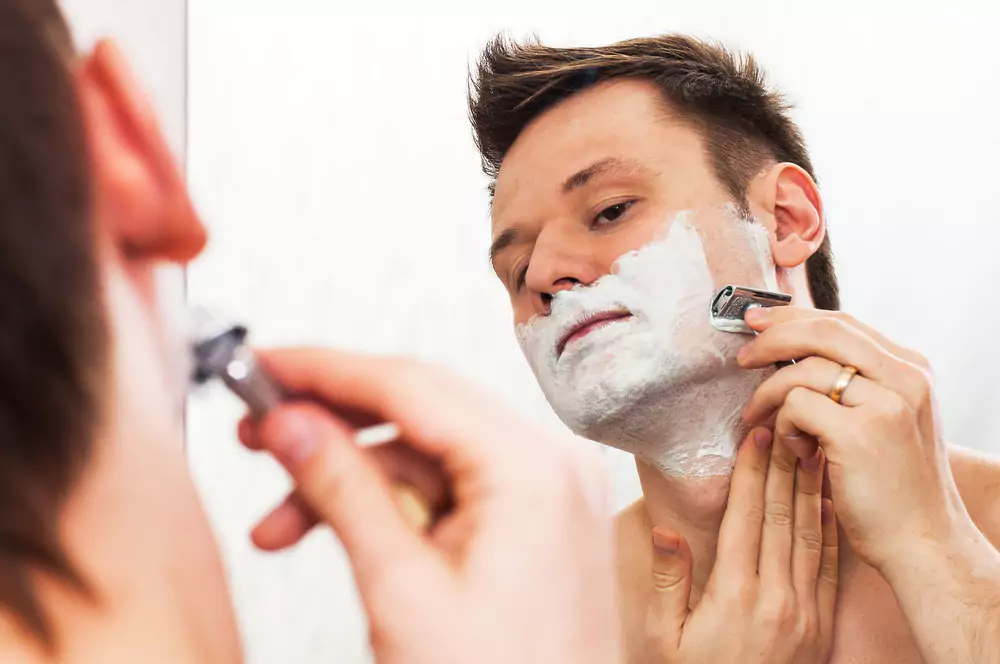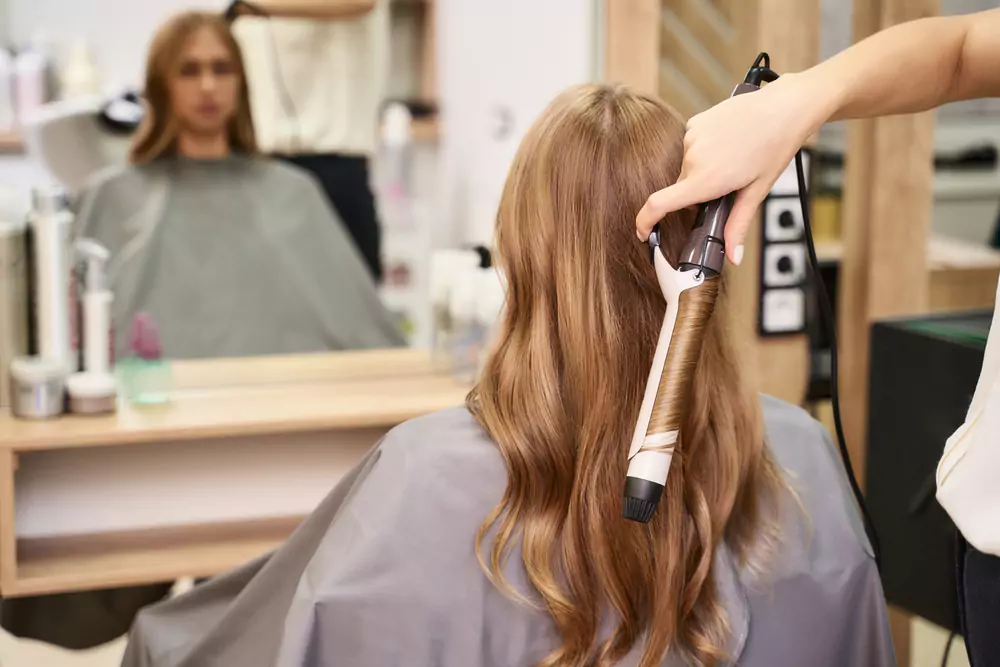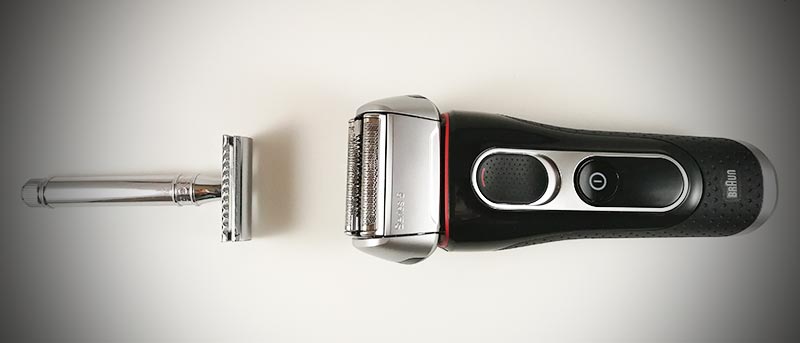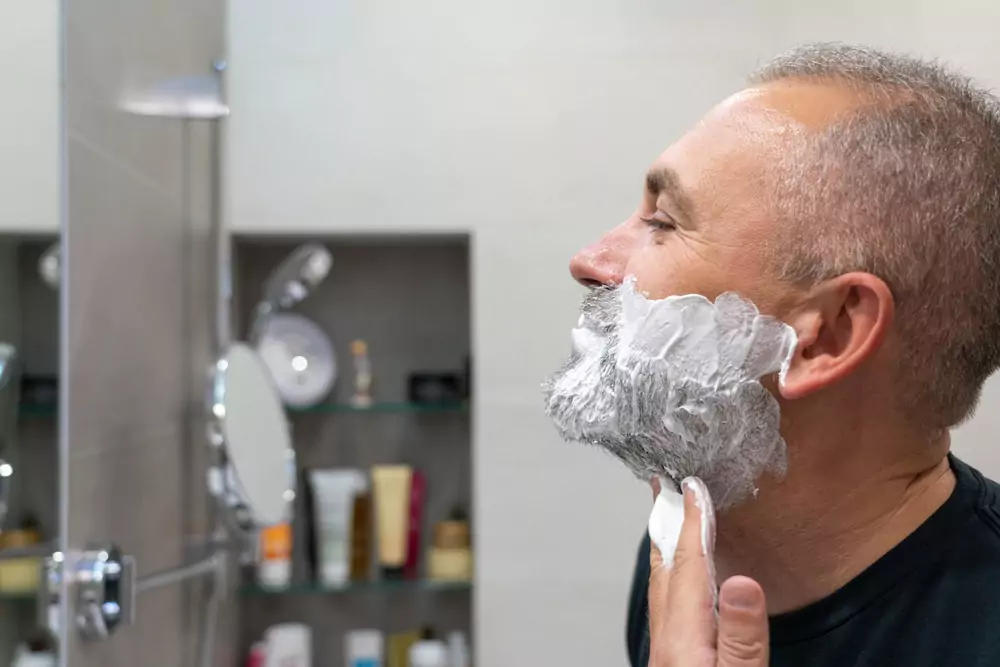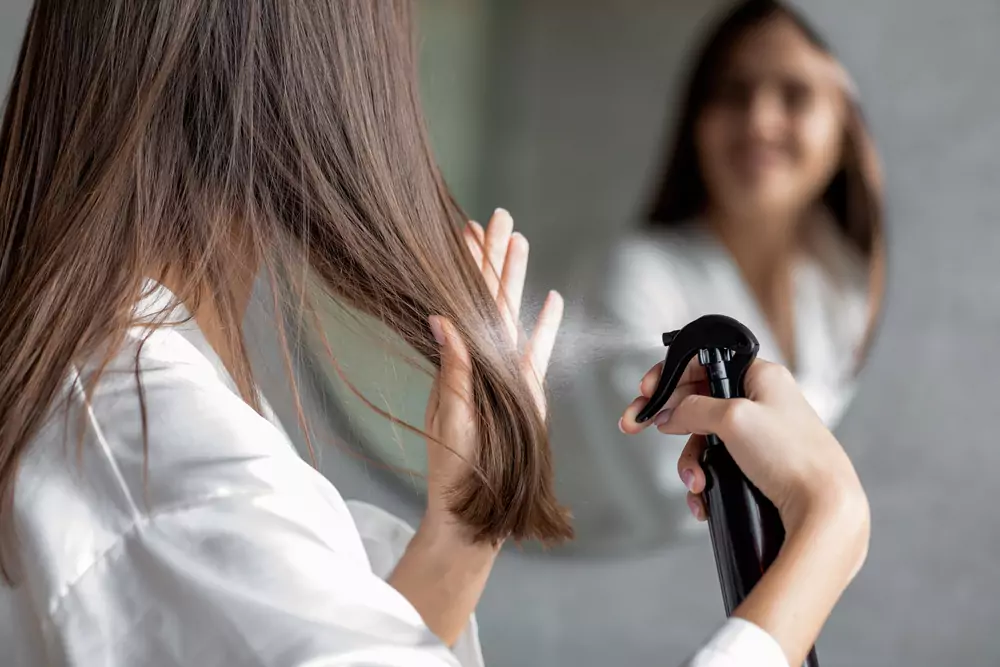Are you weary and tired of enduring discomfort, ingrown hairs, and razor burns with every shave? The safety razor is a time-tested, essential grooming equipment that should be noticed. In this article, we will explore how to shave with a safety razor, giving you detailed instructions and vital advice to produce a comfortable and close shave.
This article will provide the information and abilities required to become an expert safety razor shaver, regardless of your experience level.
How To Shave With A Safety Razor?
A close and pleasant shave can be achieved with a safety razor, a tried-and-true technique. Compared to modern cartridge razors, it can provide a better shaving experience once learned; however, it might take some effort and practice.
To learn how to shave with a safety razor properly, follow these steps:
- Start by washing your face with warm water and a gentle cleanser to remove dirt or oils. This will help soften the hair and open up the pores.
- Apply a warm towel or pre-shave oil to soften the hair and make shaving easier.
- Select a safety razor with a sharp blade. Ensure the edge is aligned correctly and securely fastened to the razor head.
- Use a shaving brush to apply a thick layer of shaving cream or soap to create a protective barrier between the razor and your skin. This will also help lift the hair for a closer shave.
- Hold the safety razor at a 30-degree angle against your skin. Avoid applying too much pressure, as this can cause irritation or cuts.
- Begin shaving in the direction of hair growth using short, gentle strokes. Rinse the razor frequently to remove any buildup.
- Use your free hand to stretch the skin taut, creating a smooth surface for the razor to glide over.
- After each stroke, rinse any excess shaving cream or hair from the razor. Reapply more shaving cream if needed and continue shaving until you have achieved your desired level of smoothness.
- Once you have finished shaving, rinse your face with cold water to close the pores and soothe the skin.
- Finish off by applying an aftershave lotion or moisturizer to hydrate and protect your skin.
Quick Tips To Shave With A Safety Razor
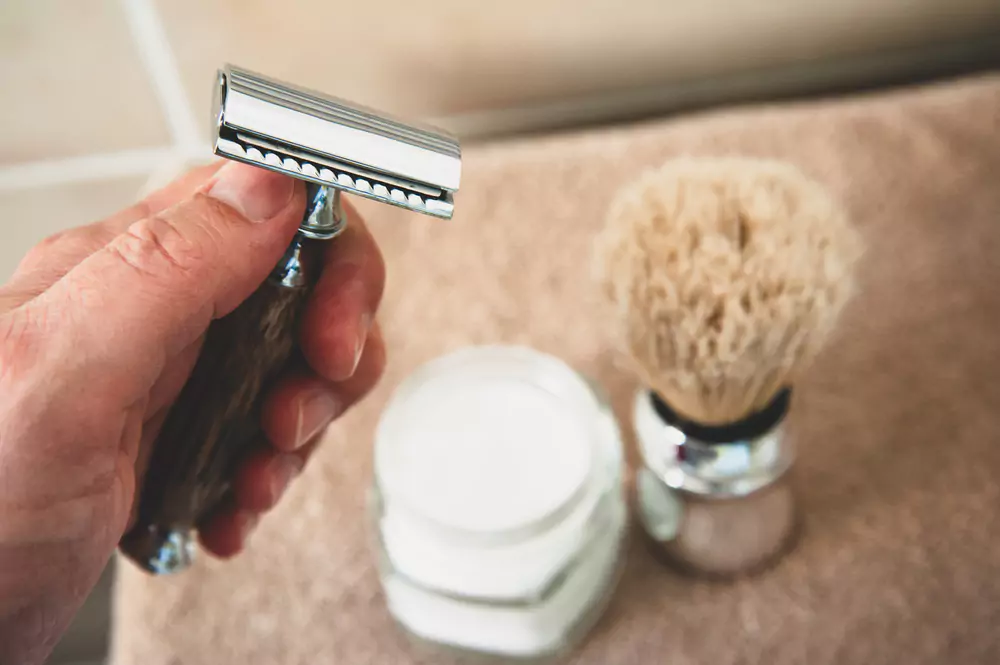

A safety razor can provide a close and comfortable shave when done correctly. Here are some quick tips to help you achieve a smooth shave using a safety razor:
- Start by washing your face with warm water and a gentle cleanser to remove dirt or oils. This will soften the hair and open the pores, making shaving easier.
- Applying a thin layer of pre-shave oil or cream can provide extra lubrication and protection for your skin. It helps the razor glide smoothly and reduces the chances of irritation or razor burn.
- Safety razors come in different styles and weights. Find one that feels comfortable in your hand and has a good balance. The razor’s weight should do most of the work, so you don’t have to apply too much pressure.
- Replace the blade regularly to ensure a clean and close shave. Dull blades can cause tugging and irritation. Changing the edge after 5-7 shaves or when you feel it’s not as sharp as before is recommended.
- Apply a thick layer of shaving cream or soap using a brush. This helps to lift the hair and provides a protective barrier between the razor and your skin.
- Start by shaving toward hair growth (with the grain) to minimize irritation and ingrown hairs. Use short, light strokes and let the razor’s weight do the work.
- Rinse the blade under running water after every stroke to remove hair, shaving cream, or soap buildup. This will prevent clogging and ensure a smoother shave.
Benefits Of Safety Razor Shave


The safety razor is a classic shaving instrument that has been around for decades. It is made up of a handle and an interchangeable blade that is secured in place by a guard. Safety razors are popular among shaving enthusiasts, even though they may need more skill and experience than contemporary cartridge razors. These razors have various advantages.
Closer and Smoother Shave
You can shave more smoothly and closely when you use a safety razor, which is one of its main benefits. Thanks to the single-blade design’s more precise control, you can lousily maneuver around facial contours and difficult-to-reach places, thanks to skin feeling softer and renewed due to the tighter shave.
Reduced Irritation and Ingrown Hairs
Safety razors are well acknowledged for their capacity to lessen skin irritation and ingrown hair incidence. Safety razors offer a more delicate shaving experience than multi-blade cartridge razors, which have the potential to pull and tear hair follicles. There is a lower chance of irritation and ingrown hairs because the single blade cuts the hair precisely at the skin’s surface.
Cost-Effective
In the long term, safety razors are far more cost-effective than disposable razors or cartridge systems, even if they may initially cost more. In the long run, safety razors are more cost-effective since the replacement blades they employ are often far less expensive than cartridge refills. Since safety razor blades are composed of premium materials and are simple to replace or sharpen when needed, they also tend to last longer.
Environmentally Friendly
Safety razors are an eco-friendly option as well. Safety razors produce less trash than disposable plastic razors, which adds to the plastic waste problem. The tiny metal blade is the only waste produced; it is recyclable. A safety razor can help you live a more sustainable lifestyle and drastically lessen your environmental influence.
Improved Skin Health
Skin health can also be enhanced by using a safety razor. Because of the closer shave, the single-blade design provides idebris, and bacteria are less likely to become in the hair follicles. Common skin conditions may be avoided, including acne, razor bumps, and infections. Safety razors are also suitable for people with sensitive skin because of their gentle shaving method, which reduces skin irritation.
5 Questions To Ask Yourself Before Switching To A Safety Razor
Before switching to a safety razor, it is essential to consider several factors to ensure that it is the right choice for you. Here are some questions to ask yourself before making the switch:
What Is My Current Shaving Routine Like?
Think about how you now shave and assess whether you are happy with it or if there are any areas you would like to change. This will assist you in deciding whether or not you should convert to using a safety razor.
Am I Willing To Invest Time In Learning A New Technique?
When it comes to shaving, a safety razor differs from an electric or disposable shaver. Gaining proficiency in shaving safety razors could require some time and practice. Do you have the time and energy to learn this new skill?
Do I Have Sensitive Skin Or Experience Irritation From Other Shaving Methods?
Safety razors are recognized for offering a closer shave and causing less irritation compared to other shaving techniques. Consider using a safety razor instead of your regular one if you have sensitive skin or are often irritated by your shaving regimen.
Am I Concerned About The Environmental Impact Of Disposable Razors?
As disposable razors are frequently composed of non-recyclable materials, they heavily contribute to the waste generated by plastic. A safety razor can be a more environmentally responsible option if you care about lessening your environmental impact because they usually feature replacement blades and produce less plastic waste.
How Much Am I Willing To Spend On Shaving Supplies?
Safety razors can save money over time since replacing blades is typically less expensive than disposable razors, even if the razors may cost more upfront. Look at your spending plan and decide whether you can afford the constant expense of buying safety razor replacement blades.
One, Two, Or Three-Piece Safety Razor – What To Consider?
A few things to consider when choosing a safety razor—one, two, or three pieces. First, the number of pieces indicates how the razor is put together. The fixed head and handle of a one-piece razor offer simplicity and convenience of operation.
A two-piece razor allows for greater adjustability regarding blade alignment because it has a separate head and handle that screws together. A three-piece razor offers excellent flexibility when adjusting the angle and blade exposure because its head, handle, and base plate are detachable.
Other considerations should be made about weight, balance, grip, and material based on individual preferences and shaving methods. Selecting a safety razor that meets your unique needs and offers a convenient and efficient shaving experience is critical.
Open Comb Vs. Closed Comb Safety Razors
With their teeth-like structures on the razor head, open-comb safety razors are ideal for people with longer or thicker facial hair because they let more hair pass through. Due to the blade’s exposure and potential for skin contact, they offer a more forceful shave.
Conversely, safety razors with closed combs offer a gentler shave and a lower chance of cuts and nicks because of a solid bar covering the blade. Experienced shavers seeking a closer shave tend to favor open-comb razors, while beginners or those with sensitive skin are advised to use closed-comb razors. Ultimately, shaving requirements and personal preference determine which open or closed-comb safety razor is best for you.
Fixed Or Adjustable Razors Safety Razors
Safety razors are a standard option when deciding between fixed and adjustable razors. Safety razors are safer because of their protective guard design, which helps prevent unintentional cuts and nicks. Constant safety razors have a constant angle of the blade, which gives consistent shaving results but may be more challenging to use correctly.
Alternatively, users can get greater flexibility in attaining a close and comfortable shave by adjusting the blade angle of adjustable safety razors based on personal taste or skin sensitivity. Ultimately, shaving requirements and personal preference determine the best fixed or adjustable safety razor.
Using Your Safety Razor: Techniques For Novices
A safety razor can provide a close and comfortable shave, but it requires some technique and practice, especially for novices. Here are some strategies to help beginners get started with using a safety razor effectively:
- Wash your face with warm water and a mild cleanser to remove any oil or grime. This will facilitate shaving by softening the hair.
- To get a thick lather, use soap or shaving cream. Apply the lather with a shaving brush, covering the entire region you want to shave with circular strokes.
- Grasp the safety razor firmly, positioning your fingers on the handle to enhance your grip and control. The angle of the razor’s head concerning your skin should be 30 degrees.
- Shave in the direction your hair grows, starting with soft, delicate strokes. Avoid exerting too much pressure, leading to more cuts and nicks.
- After a few strokes, rinse the blade under running water to remove leftover shaving cream or hair. A smoother and more efficient shave will result from doing this.
- For a closer shave, you can shave across the grain if necessary. But use caution since this may lead to further irritation or ingrown hairs. It is advised to begin with one pass in the direction that hair grows and to only go against the grain when required.
- Using a safety razor to shave demands focus and patience. Steer clear of rushing things to reduce the possibility of mishaps or skin discomfort.
- Rinse your face with cold water to seal the pores after shaving. After using a fresh towel to pat dry your skin gently, soothe and hydrate it with an aftershave balm or lotion.
Conclusion
In conclusion, learning to use a safety razor properly requires experience and technique. People can minimize the danger of discomfort or cuts while still getting a close, comfortable shave by following the instructions provided in this extensive guide.
It’s crucial to properly prep the skin and hair, select the best razor and blade, shave using the proper technique, and store the razor after each use. Anyone may reap the benefits of utilizing a safety razor for a smooth and fulfilling shave with perseverance and attention to precision.
FAQs
What Is A Double Edge Safety Razor?
A double-edge safety razor is a type of shaving tool with two sharp edges on each side of its blade, allowing for a closer and more precise shave than single-edged razors. It is also known as a DE razor.
How Often Do I Change The Blade?
Changing the blade every 3-6 months is recommended, depending on frequency of use and personal preference. Regularly changing the edge ensures optimal performance and prevents rust or bacterial buildup.
How Do I Pick A Double Edge Razor Blade?
When selecting a double-edged razor blade, choose one with a high carbon content for improved durability and sharpness. Additionally, consider the coating material (e.g., stainless steel, platinum, or titanium) and the blade’s thickness for optimal performance.
Where Can I Store My Safety Razor?
After each use, thoroughly dry and store your double-edged safety razor in a cool, dry place to prevent rusting. You can keep it in a protective case or hang it on a hook, ensuring it remains free from moisture and direct sunlight.
How Do I Stop The Bleeding?
To stop minor bleeding after shaving with a double-edged safety razor, apply gentle pressure to the affected area with a clean cloth or gauze for a few minutes. Elevate the injured area above heart level to reduce blood flow. If bleeding persists or worsens, seek medical attention.

